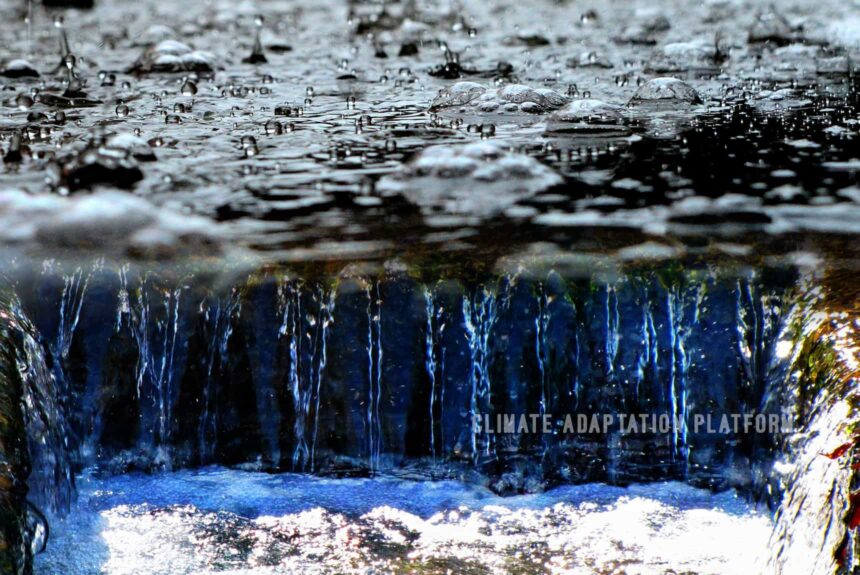While the traditional urban stormwater management systems, known as “grey” infrastructure, have effectively mitigated flooding and managed stormwater runoff, rapid urbanisation and climate change effects are pushing these systems beyond their capacity.
The World Bank estimates that some 56% of the world’s population, or around 4.4 billion, live in cities. By 2050, this number could more than double.
A century of unsustainable urban development has damaged the environment and disrupted the natural water flow and cycle.
Increased pavement in cities using traditional impervious materials like concrete and asphalt also increases the runoffs during heavy rainfall resulting in floods. Even stormwater controls use the same industrial materials such as cement, concrete, and cast iron, hence the term “grey” infrastructure.
The pressures and limitations of grey infrastructure in cities to manage stormwater on the backdrop of rising population and the increasing intensity and frequency of extreme events due to climate change are pushing planners and decision-makers to look for alternative and more sustainable solutions to stormwater management.
Green infrastructure like bioswales, rain gardens, downspout disconnections, permeable pavements, planter boxes, rainwater harvesting practises, stormwater detention basins and urban forests, and activities like wetland and stream recovery and preservation in cities are viewed as an alternative solution to managing urban stormwater runoff.
Like grey infrastructure, green infrastructure also has limitations. But implementing these two approaches side by side, they can complement each other to form a more efficient and resilient stormwater management system.
Utilising the knowledge of the strengths and limitations of grey and green infrastructure, the commentary published in the Journal of the American Water Resource Association (JAWRA) makes a case for implementing both green and grey infrastructure.
This proposed hybridised solution of both green and grey infrastructure is a system that purposively joins green and grey assets to capture and disperse stormwater runoff. The authors pointed out that to optimise the impact of this hybrid approach, factors such as weather, development, and social patterns in the area must be considered in the design and installation of the system.
For example, rainfall and storm events can vary in duration and intensity. At the same time, the built environments and urban landscapes are also ever-changing, which can affect stormwater runoff under different stormwater events.
In areas that have shorter, slower, smaller, and less intense (e.g., small peak flows and less volume) stormwater runoff, green infrastructure will be sufficient to manage this, but in areas that experience stronger, faster, and larger storms with more intense stormwater runoff, green infrastructure alone might be less effective, in managing stormwater runoff. These areas would benefit from a hybridised green-grey solution.
The authors write: “We believe that a conscious hybrid Green–Gray approach is more efficient, effective, and resilient across a wider range of stormwater scenarios than leaving such design to chance as a result of an ever-dynamic urban setting. To make this case, we begin with more context on the history of urban development with a specific focus on stormwater infrastructure. We then introduce a more detailed discussion of GI and link it to stormwater mitigation. Ultimately, we make the case for hybrid in the core of this commentary. We ground all of the above in equity and restorative justice in the advancement of hybrid approaches prior to concluding with some final thoughts in favour of a purposeful hybridised effort for urban stormwater management.”
Sources:
Hendricks, Marccus D. and Asia L. Dowtin. 2023. “Come hybrid or high water: Making the case for a Green–Gray approach toward resilient urban stormwater management.” JAWRA Journal of the American Water Resources Association 00 (0): 1–9. https://doi.org/10.1111/1752-1688.13112.



Leave a Reply